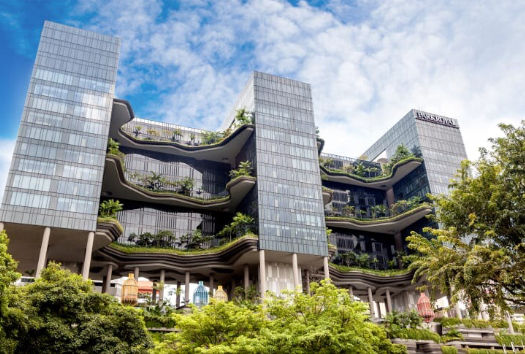Green Architecture: A Step Forward in Sustainability
- Stem To Go

- Dec 3, 2021
- 3 min read
What is Green Architecture?
In order to combat climate change, green architecture has come into its own as a way to promote sustainability and environmental health in larger cities. Also known as green design, green architecture strives to minimize the environmental effects of construction. It draws on ideas and technologies such as solar panels, rainwater collection, community composting, and use of recycled materials.
What Do Buildings Look Like?
Most green buildings try to incorporate a few common characteristics:
Energy efficient lighting systems
Use of reusable energy (ex: solar panels)
Water-saving and recycling plumbing systems
Non-toxic materials
Rainwater collection and greywater reuse
Efficient use of land/space
Use of native vegetation to improve solar energy use
Locally obtained materials
Good air quality indoors
Design that can adapt along with the environment
Next, we will look at some real-world examples of green architecture:

Marco Polo Tower uses its unique design to minimize waste. Credit: Franziska Krug/German Select/Getty Images
Marco Polo Tower can be found along the banks of the Elbe River in Hamburg, Germany. Designed by Behnisch Architekten, it uses a unique structure in replacement for air conditioning. There is natural ventilation, and a heat exchanger to help residents live comfortably.

Bosco Verticale can be found in Milan, Italy. Translating to “vertical forest,” it is truly an architectural glory. Credit: Mairo Cinquetti/NurPhoto/Getty Images
These deluxe apartments help improve air quality in Bosco Verticale and the city alike. Created by Architect Stefano Boeri, these apartments provide plenty of space in their design for large trees and shrubs.

PARKROYAL Collection Pickering in Singapore. Credit: iStock Editorial/Getty Images
Designed by WOHA Architects, PARKROYAL Collection Pickering uses concepts of rice paddies to create sky gardens along the sides of the building. The manmade landscape includes palm tree, waterfalls, and crevices, using Singapore's natural rainfall as a way to sustain the vegetation.
What is LEED?
Leadership in Energy and Environmental Design (LEED) is an acronym used by architects to help rate buildings and designs in order to earn a LEED Certification. A project can earn a Silver, Gold, or Platinum certification based on how many points it earns.
Why is Green Design Important?
With energy consumption steadily rising, green architecture provides a way to lessen the environmental impact of urbanization and construction. Though not 100% perfect, the goal is for buildings to create as close as possible to zero net-waste in water and air. There could also be the best outcome: a net increase in contribution to the environment. With proper time and research, green design may be the new normal, making urbanization more environmentally-friendly than every before.
Challenges of Green Architecture
As with many new ideas and technologies, green architecture has its own challenges. Climate change isn’t stopping, and the world will move on even if it continues. However, life may not be able to adapt rapidly enough to make up for the fluctuating temperatures. Currently, most buildings are constructed without thought towards the environment. They use unsustainable materials and are constructed with poor design. Building sustainable hotels, homes, and more is a a challenge because it is different. In order for green architecture to succeed, there must be collaboration between developers, architects, engineers, and citizens.
Looking Towards the Future of Green Architecture
Unique architecture serves as an interest for many people, with terms such as eco-design, eco-friendly architecture, and arcology being used. There are also global movements such as Mission 2020, which call for environmental improvements within cities.
However, in order to see green architecture come into the light, there must be community agreement and collaboration calling for sustainable changes to existing buildings. What matters is the balance of environmental impact, beauty of design, and usability. If all three can be achieved, green design has a bright future.
Written by: Mackenzie
References
Antwerp, Nicholas Van. “What Is Green Architecture? (+How It Informs Modern Sustainability).” Learn Hub, https://learn.g2.com/green-architecture.
Craven, Jackie. “When ‘Green’ Architecture Is More than a Color.” ThoughtCo, ThoughtCo, 21 June 2019, https://www.thoughtco.com/what-is-green-architecture-and-green-design-177955.
Staff, CNN. “Green Buildings: 18 Examples of Sustainable Architecture around the World.” CNN, Cable News Network, 22 Apr. 2020, https://www.cnn.com/style/article/green-buildings-world-sustainable-design/index.html.
Wood, Samantha. “How Does Green Architecture Help the Environment?” Brightly, 15 July 2021, https://brightly.eco/how-does-green-architecture-help-the-environment/#:~:text=Green%20architecture%20is%20a%20method,have%20on%20their%20surrounding%20environment.&text=They%20are%20designed%2C%20constructed%2C%20and,the%20biodiversity%20of%20the%20area.




Comments